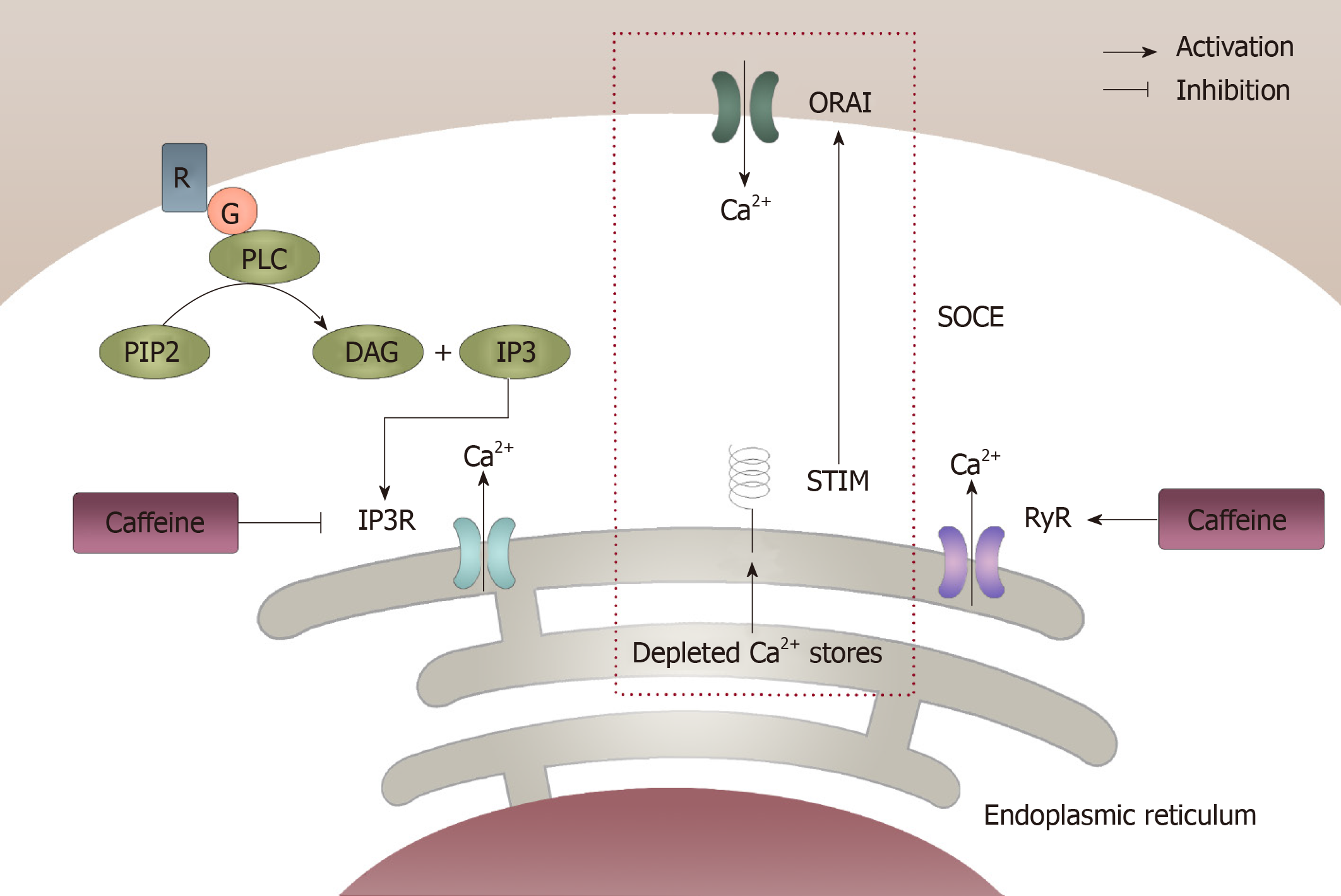Copyright
©The Author(s) 2020.
World J Gastrointest Oncol. Feb 15, 2020; 12(2): 149-172
Published online Feb 15, 2020. doi: 10.4251/wjgo.v12.i2.149
Published online Feb 15, 2020. doi: 10.4251/wjgo.v12.i2.149
Figure 2 Modulation of intracellular calcium homeostasis by caffeine.
Caffeine can modulate intracellular calcium homeostasis of inexcitable cells in two different ways. One way is by inhibiting the inositol 1,4,5-trisphosphate receptor through which Ca2+ released from the endoplasmic reticulum can be decreased, which results in a decrease in intracellular calcium levels. However, caffeine can increase the intracellular calcium levels by activating the ryanodine receptor, which causes an increase in Ca2+ being released from the endoplasmic reticulum. In this case, the store-operated Ca2+ entry, which was initiated from the depletion of Ca2+ from the endoplasmic reticulum can be activated and then result in an increase in extracellular Ca2+ getting into the intracellular compartment. IP3: 1,4,5-trisphosphate; IP3R: 1,4,5-trisphosphate receptor; ER: Endoplasmic reticulum; RyR: Ryanodine receptor; SOCE: Store-operated Ca2+ entry.
- Citation: Cui WQ, Wang ST, Pan D, Chang B, Sang LX. Caffeine and its main targets of colorectal cancer. World J Gastrointest Oncol 2020; 12(2): 149-172
- URL: https://www.wjgnet.com/1948-5204/full/v12/i2/149.htm
- DOI: https://dx.doi.org/10.4251/wjgo.v12.i2.149









